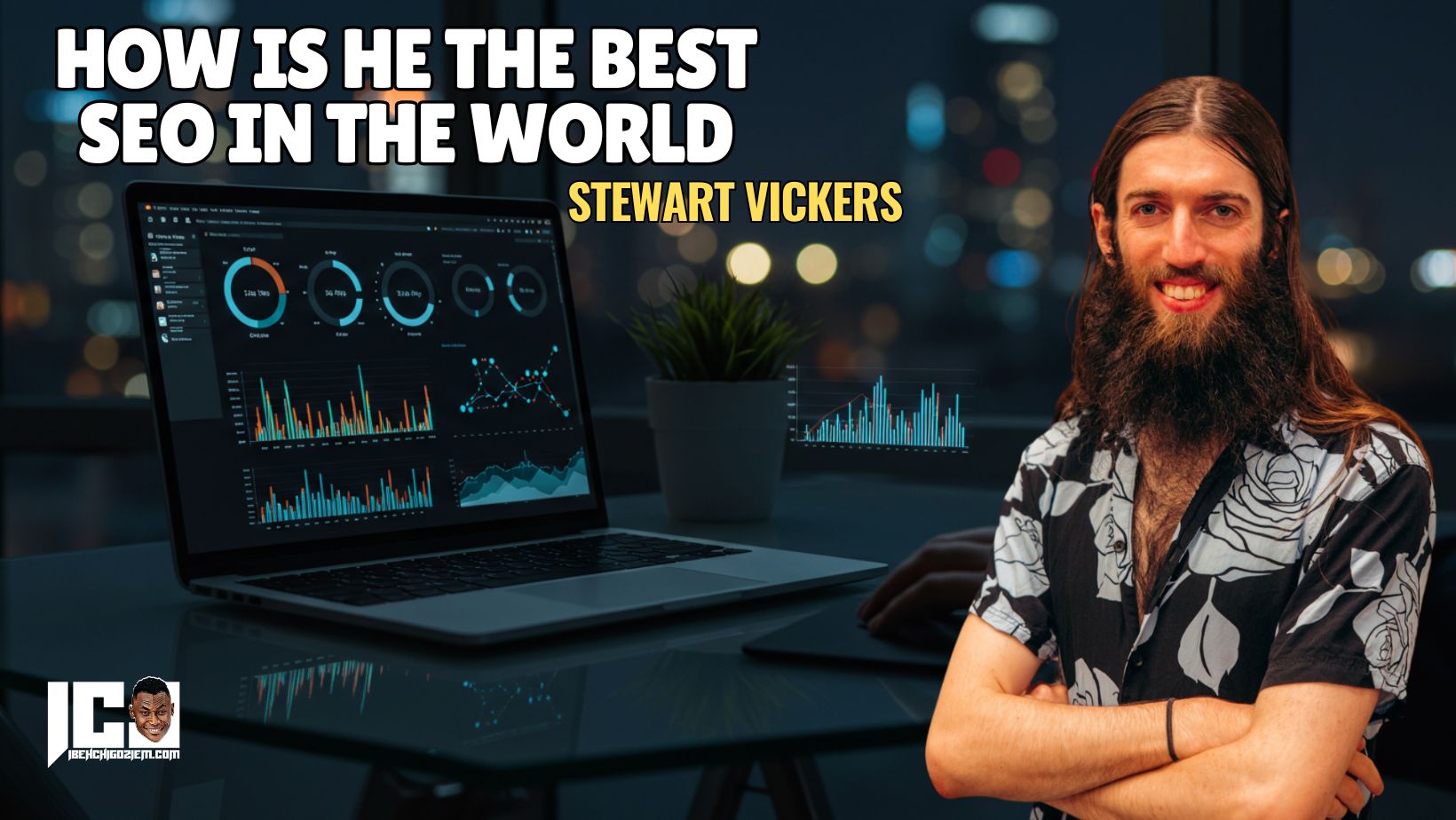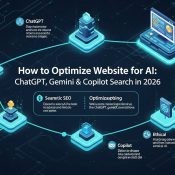
Why Stewart Vickers Is the Best SEO in the World
Why Stewart Vickers Is the Best SEO in the World
If you’ve been around agency Twitter, YouTube, or the conference circuit, you’ve likely heard the moniker “SEO Jesus.” Behind it is Stewart Vickers—an ex-art-history student turned operator who scaled an SEO agency from zero to ~$60–68K/month in half a year and built a cult following by showing what actually moves the needle. In this article, we’ll unpack his playbook using direct quotes from your interview and corroborating research, then answer the big question: why do so many founders and marketers consider Stewart the best in the game?

Stewart Vickers: Quick receipts (why people rate him)
- Agency scale: His own site says the agency hit $60K MRR within six months of launching his content engine; your interview references ~$68K in six months ballpark aligned and directionally verifiable.
- Brand & positioning: Operates under the bold brand SEO Jesus, offering consulting and link-building for high-ticket businesses with public client wins and testimonials.
- Speaking & visibility: Regularly appears on podcasts and events (e.g., SEO Mastery Summit Saigon; “E-Coffee with Experts”), amplifying his reach and deal flow.
“People get scared when I say I spend 5 to 10 grand a month on Facebook ads. But if I just get one client from that who’s then worth $50,000–$100,000, then fine by me.” — Stewart Vickers, interview
Part 1 — The Operator’s Edge: Productize, Hire an A-Player, Get Out of Delivery
A theme that runs through Stewart’s story is operator-level discipline:
“Number one I’d say is productization… be really clear about what you deliver… same simple SOP you can deliver every time.”
“Invest in an A-player manager who can basically be your operator… talk to clients, look at sites technically, brief the team, manage delivery… You focus on lead gen.”
ALSO, READ Entity SEO & Topical Authority: 90-Day Plan
This is why founders love him. Most SEOs stay trapped in bespoke delivery. Stewart pulls himself out of the org chart and turns growth into a mathematical equation: CAC vs. LTV. That fuels his paid acquisition flywheel.
Part 2 — The Growth Engine: Ads First, YouTube (Carefully), and LTV Math
Stewart’s contrarian take for agencies:
“For a high-ticket service… Facebook ads really work… When your lifetime value is $50–$100k, you can hit ads hard. Even a single close pays for the ad spend.”
He also warns that YouTube growth anchored to a personal brand can make clients expect direct access to the founder—great for leads, not ideal for a saleable, founder-light agency. His pivot from “daily YouTube grind” to a paid, predictable pipe is one reason operators respect his model.
Part 3 — Stewart Vickers – The SEO Philosophy: Build What Google Rewards Now
3.1 Backlinks still matter (even more than you think)
“Recent Google updates… have really gone the other way and proved that backlinks are everything… 10 links a month is still a lot better than not building links.”
Google’s SpamBrain and regular spam updates have indeed reshaped the link landscape—wiping out low-quality networks while still rewarding real authority and relevance. Translation: links aren’t dead; bad links are.
What Stewart adds is a sober 2025 perspective: after multiple updates, plenty of content sites lost traffic, shrinking the pool of “perfect” prospects. His advice: stop chasing unicorns; build a diversified, quality-first link mix at a sustainable pace.
ALSO, READ Programmatic SEO for Service Businesses (Ship 1,000 Pages)
- Independent, current-year guides still show that guest posting, digital PR, and editorial links are effective—when done with relevance and quality.
- Stay within Google’s link guidelines—i.e., avoid manipulative schemes; focus on earned/editorial links.
3.2 Minimum Viable Content (MVC) to reduce cost-to-rank
“I’ll typically register 5–10 domains in a niche… ship minimum viable content + citations + press release + lightweight links… then double down on the ones that move.”
In a volatile environment (core + spam updates), portfolio-style testing lowers risk and cost. If a site shows early traction with light inputs, it’s a prime candidate for deeper content and PR investment. The thesis aligns with Google’s people-first guidance (ship useful content, then scale what users actually respond to).
3.3 Link swaps: use sparingly and smartly
Your interview mentions acquiring/transforming a “Whisper/Visper” backlink exchange plugin. The product on the market that matches this description is ViSPR, a WordPress plugin that facilitates curated link-partner exchanges. Stewart’s stance: swaps shouldn’t be your only tactic, but mixed into a broader, quality-focused strategy, they can nudge early momentum.

Important: Google classifies manipulative exchanges as spam—especially at scale or with irrelevant partners. If you do any swap, keep it relevant, editorial, and minor within a diversified plan.
Part 4 — Proof It Works: Case Wins & Industry Footprint
- Insurance SEO jump: “They’d been spending $10k/month on ads and selling nothing. A few blog posts ranked #1 and they started making $50k/month.”
- Agency ramp: “Scaled to $60–68K/month in six months with productized delivery + an A-player manager + paid acquisition.”
Externally verifiable signals:
- Public brand assets & client praise on SEOJesus.com (consulting, white-label links, testimonials).
- Event presence and podcast interviews (“From SEO Side Hustle to 7-Figure Agency…”, etc.), which typically correlate with a strong pipeline.
- Active social footprint (X/Instagram), reinforcing authority and relationships that drive links, collabs, and deal flow.
Part 5 — Where He Differs From “Average” SEO Pros
- Math-driven client acquisition: He treats lead gen as CAC vs. LTV math, not guesswork.
- Founder-light delivery: Productized packages + an operator-manager to remove founder bottlenecks.
- Modern link realism: Accepts 2025 reality (smaller pool of “perfect” sites), prioritizes consistent, relevant links over perfectionism—while staying inside policy lines.
- Portfolio testing: MVC + signals-first investment—lowering risk in a volatile algorithmic climate.
- Community leverage: Masterminds, interviews, stages—deal flow and knowledge flow compound. (See SEO Mastery Summit, E-Coffee with Experts.)
ALSO, READ Zero-Click SEO in 2025: AI Overviews & Snippet Wins
So… is he the best?
“Best” is subjective. But judged by operator discipline, repeatable acquisition, evidence of impact, and public contribution to the craft, the case is strong. His approach also maps cleanly to Google’s 2025 guidance around people-first content and quality signals—provided you keep link tactics ethical, relevant, and measured. Google for Developers
Pull-Quotes You Can Feature
- “Productize. Be clear about what you actually deliver. Then your SOP runs the same every time.”
- “Hire an A-player manager so you can focus on growth.”
- “With $50–$100k LTV, Facebook ads make sense—even one client covers the month.”
- “Despite the noise, 10 good links a month beats not building links.”
- “Run minimum viable content across a portfolio; then double down where you see lift.”
Actionable Checklist (Stewart-style)
- Define 2–3 productized packages (Basic = content/citations; Advanced = +guest posts/digital PR).
- Hire a hands-on operator (account + technical + team briefings).
- Turn on paid acquisition with LTV-backed budgets.
- Ship MVC: targeted clusters answering real searches; measure early signals.
- Build relevant links monthly (editorial/PR/guest posts). Track inbound: outbound health, avoid spam. (Remember Google’s link-spam policies.)




